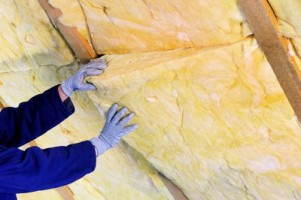If your house constantly feels chilly no matter how many heaters you have going, it may be worth your while to look into insulating. Insulation is one of the best ways to keep your house warm, dry and healthy. Houses built after 2007 are required to have high levels of insulation. If your house was built before that, it may be under insulated and you may want to look at adding further insulation to make your home more comfortable.
This guide will give you a place to start if you want to keep warmer and healthier this winter without escalating power bills.
How does insulation work?
Insulation is like adding a blanket to your house. Small pockets of air in the insulation help prevent heat from passing through it. In winter, insulation will help keep the warmth in, and in summer it will help keep heat out. If you heat an uninsulated house, a huge amount of that heat will escape through the walls, floor and roof. In an insulated house, the heat loss is dramatically slowed; and if the windows are doubleglazed, the house will stay warm even with the heaters off.
How is insulation measured?
Insulation is measured in R-values, which gives an indication of how effective the blanketing effect will be: the higher the R-value, the better the insulation. The colder your climate is, the higher R-value you will need. The R-value changes depending on the type of material used, the thickness of it, how closely-packed it is and it’s age. Insulation settles over time, which makes the air pockets smaller. How it is installed and the type of house you have will also affect the R-value.
First steps:
A great first step is to have a home energy audit. Someone will visit your home and assess it for the best ways you can reduce energy use. They will be able to tailor their advice for your budget.
If you don’t want an audit, do a pre-insulation check on your house. Make sure all draughts and leaks are stopped, check what insulation the house already has, if any, and what climate zone your house is in.
Once you have figured out what insulation you need, aim for the biggest areas of heat loss. 30-35% of heat loss occurs through the roof, 18-25% through the walls, 12-14% down and through the floor and 20-30% through the windows. The remainder is lost through draughts or opening doors. It is hard to insulate walls unless you are undertaking major renovation, so most people start with the roof and underfloor.
Types of insulation:
Blanket segments or blanket roll
These come in fibreglass, polyester or wool varieties. Fibre glass may be an irritant to the skin, nose, throat and eyes, but is easier to cut than wool or polyester. They come in a variety of R-values.
Polystyrene
These sheets look like the polystyrene sheets that protect new appliances in their box. They are pushed into the gap between the joists. It comes in a variety of R-values and is easy to install. It is mostly used for underfloor insulation.
Loose or blown
Loose or blown insulation comes in paper, wool or fibreglass varieties. A professional is needed to install it with a special blower. It is quick to install and easy to get into small spaces, however may settle over time which will reduce its effectiveness. It is easy to increase the R-value as more loose fill can be blown in.
Foam
Foam insulation is often used in walls where access is difficult. A small hole is cut into the wall and the foam sprayed in. It is difficult to know if gaps are left which may affect the performance of the insulation.
Foil
Foil insulation looks like a large sheet of tin foil. It is used under floors to create a passive air pocket, and the shiny surface reflects heat. It has a low R-value and will deteriorate over time as the surface becomes less shiny. Extreme care must be taken when installing that it is not stapled to any electrical wires.
If you need help paying for insulation:
If you are a homeowner or landlord with a house built prior to 2000, you can get up to 33% of your insulation paid for by the Energywise fund. If you or your tenants have a community services card, you may get up to 60% of your costs. If you also have a respiratory or chronic illness you may qualify for 100% of the insulation costs. Energywise and some councils also have services that allow you to pay the cost of your insulation off over time. Check out the Energy wise website for more details. Some councils, such as the Wellington City Council, provide funding for free home energy audits.
You will be surprised how much warmer and drier your house is once you have insulation installed. Hopefully you will also enjoy the benefits of lower power bills and a healthier family!
Further reading:
https://www.consumer.org.nz/articles/insulation-basics
http://www.energywise.govt.nz/funding-and-programmes/insulation-and-clean-heating
http://www.cea.co.nz/insulation
http://www.dbh.govt.nz/quick-energy-guide





